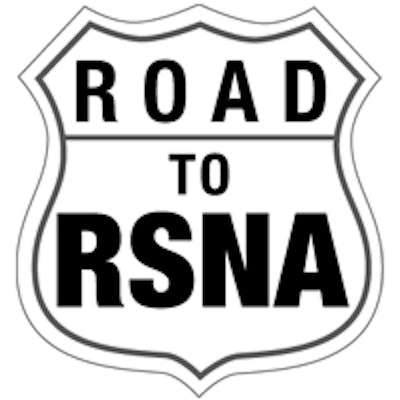
The 100th meeting of RSNA just happens to be spiral CT's 25th anniversary, and in 2014 both are in fine shape. CT's star wasn't always rising, of course. Twenty-five years ago, the modality was all but left for dead as MRI was rising to prominence.
It was the invention and application of spiral CT, first presented in clinical studies at the 1989 RSNA meeting, that turned things around and put CT on track for today's extraordinary achievements, according to medical physicist and CT pioneer Willi Kalender, PhD.
Today, innovation remains at the heart of every advance in CT imaging, and at RSNA 2014 it shows up at every step in the imaging process, from acquisition to reconstruction to analysis.
There are discussions of conebeam CT, high-efficiency direct conversion detectors, and new, more efficient detector materials. This year you'll find presentations on spectral and multienergy imaging, which continue to break ground in new applications, making tumors, soft tissue, blood, and bone more conspicuous.
Cardiac imaging is progressing in its quest to stop motion in the fast-beating heart via new scanners and acquisition methods. New techniques compete to best assess the hemodynamic significance of coronary artery stenosis, opening a window on a blind spot in coronary CT angiography.
Assessment of the myocardium, ventricles, and aorta keeps improving, and radiation doses keep dropping amid improving image quality, thanks to a new generation of iterative reconstruction tools. Plaque analysis is no longer limited to the measurement of calcium, as the prognostic value of noncalcified plaque is tested and incorporated into individual risk profiles. Researchers are fusing CT images with electroanatomic mapping to tackle complex ventricular fibrillation ablation procedures.
In the brain, perfusion and CT angiography are melding into a single, dose-efficient exam to look at cerebral vasculature and blood flow. In the lungs, screening for cancer is being tried in new populations, and new techniques are honing in on treatment response measurement, key to patient management and better outcomes. The same advanced techniques are revealing new information about the gastrointestinal tract.
Even beyond the realm of medicine, CT is taking center stage in revealing the secrets of antiquities from Peruvian mummies to Judaic tabernacles. We invite you to scroll through the links below to create your own CT adventure at this year's RSNA meeting.
For detailed listings of scientific abstracts and other presentations straight from RSNA, click here.




















